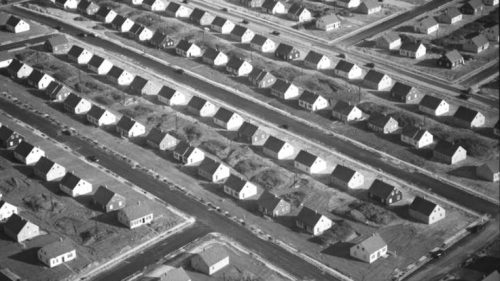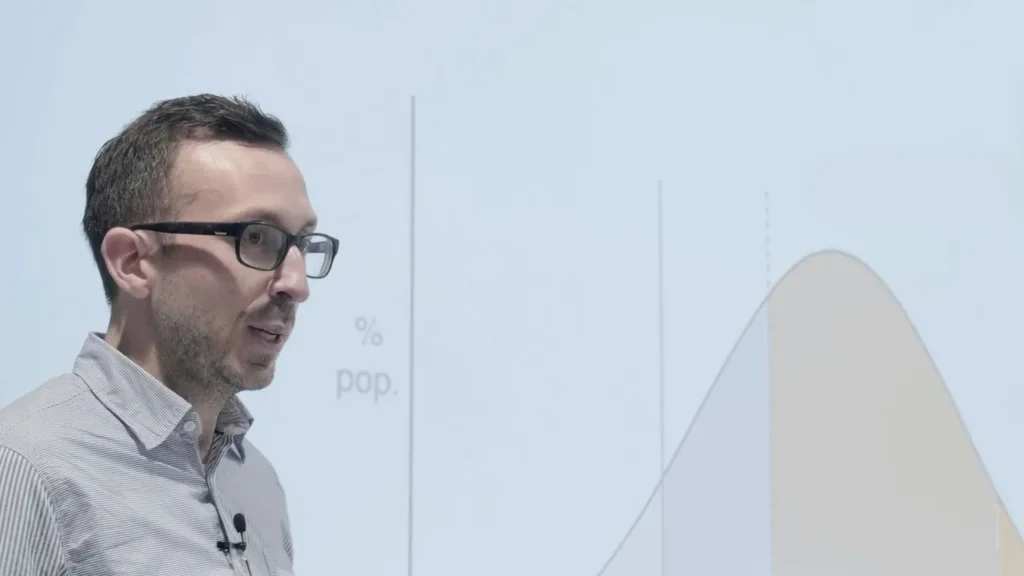Building Relationships
“We shape architecture, thereafter it shapes us” – Winston Churchill
In understanding our relationship with architecture, Winston Churchill’s insightful statement is most commonly interpreted as a chronologically linear order of creation followed by habitation. This editorial suggests reframing that relationship instead as a continuous dialogue involving both struggle and co-operation, and speculates on the transference of traits between both parties.
The dynamic created between environment and inhabitant can be understood through the forms of expression each party possesses. Architecture presents affordances – actions made possible to us through design – these range from ‘violent’ imposition, to gentle guidance. The inhabitant can either accept the affordances on offer or create alternatives by exerting force onto the space. Inhabitant-led dialogues can mean physical alterations to architecture, but more often take form as unprescribed use of space to meet needs.
The Dynamics of Dialogue
Acting as either impeder or enabler, architecture often succeeds in imposing its intent by setting powerful limitations on users. Take for example the fountains at Trafalgar Square, installed to impede large crowds from gathering as a way to discourage demonstrations. As a result, protestors are confined to the streets of Whitehall and the limited space outside parliament. In contrast, Rabin Square in Tel Aviv was intentionally designed to allow gatherings, acting as an enabler for protest outside City Hall. These spaces create a sense that either the environment lends hand to, or battles individual or collective desires (in this case for political expression).
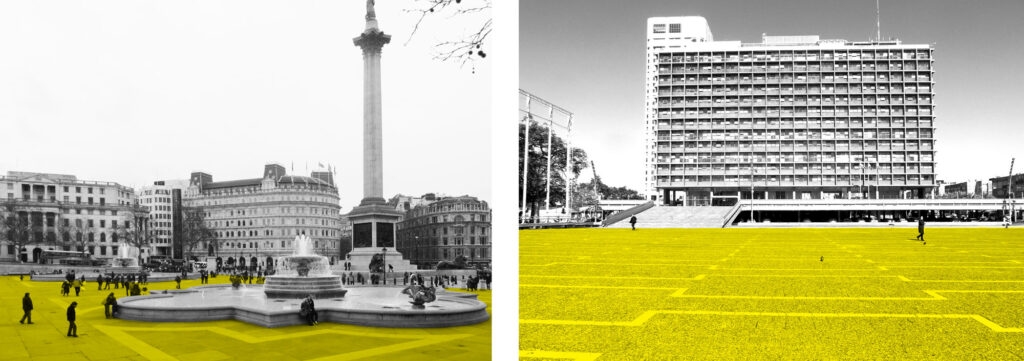
Architecture as limiter or enabler. Left: Trafalgar Square (Photo: Charles D P Miller) Right: Rabin Square (Photo: Rabiarebs)
We might imagine the interaction between people and architecture as one defined by intent. It is whether the intent of both are aligned or not that defines the dynamic of the dialogue. Here I would argue, we should critically observe the party that most commonly commands, by proxy of physical dominance: Architecture. An understanding of how we give voice to architecture by embedding intent into materiality should inform both how we shape, and in turn are shaped by it.
The described exchange results in either the imprinting of the environment’s intent and values on human behaviour, or of the user’s values through the physical adaptation of space. Specifically, the following ideas will seek within the voice of architecture its effect on the wellbeing of the user.
Leading by example: Environment-human dialogue and learned behaviour
Behavioural plasticity refers to the ability to change behaviour as a result of exposure to stimuli and evolving environmental conditions. The neural changes that support behavioural plasticity have been studied in psychology as imprinting, habituation, and conditioning; and in neuroscience as neuroplasticity, occurring “at all levels of the nervous system including molecular, cellular, systems and cognitive levels.”1
Evidence of neuroplasticity reinforces the notion that continued exposure to environments which support certain patterns of activity contribute to learned behaviours. It urges revisiting our understanding of the balance between the transient or permanent nature of state and trait, towards a more fluid, transactional model.
The spaces we inhabit and the objects in our surroundings are continuously guiding us (to varying degrees of effectiveness). Whether through the curation of social interactions, physical limitations, or visual cues: we adopt behavioural patterns that in turn influence traits. Referring to this process as Environmental Trait Transference (ETT), the following is an exploratory approach to framing its effects, and possible avenues for further research.
Environmental Trait Transference (ETT)
Harmful Transference
Harmful ETT refers to what we would deem as learned behaviour detrimental to the individual or collective.
Individual example: Hampering learning
The types of environments that we grow to associate with certain activities can condition us into counter-productive habits. The almost uniform and limiting way in which we carry out education, for example – long hours of sitting in silence – gives little opportunity to individual children to discover other ways in which they might learn more effectively, or enjoyably (they happen to be linked). Our schools introduce and reinforces a relationship between a specific physical action, even posture, and a corresponding mental activity – habituating many into both physically and mentally unhealthy behaviour.
Collective example: Property and social aggression
When architecture is defined by design gestures intended to repel the other, we embed selfish, defensive values into our surroundings. Private development in public spaces now goes hand-in-hand with designing out interactions with a person or activity not directly beneficial to the property [owner]. Architecture is then employed to prevent its own use by the other even if it comes at no cost. This trait leads by example as an acceptable approach to property. As we design out generosity from our buildings, so too from culture.
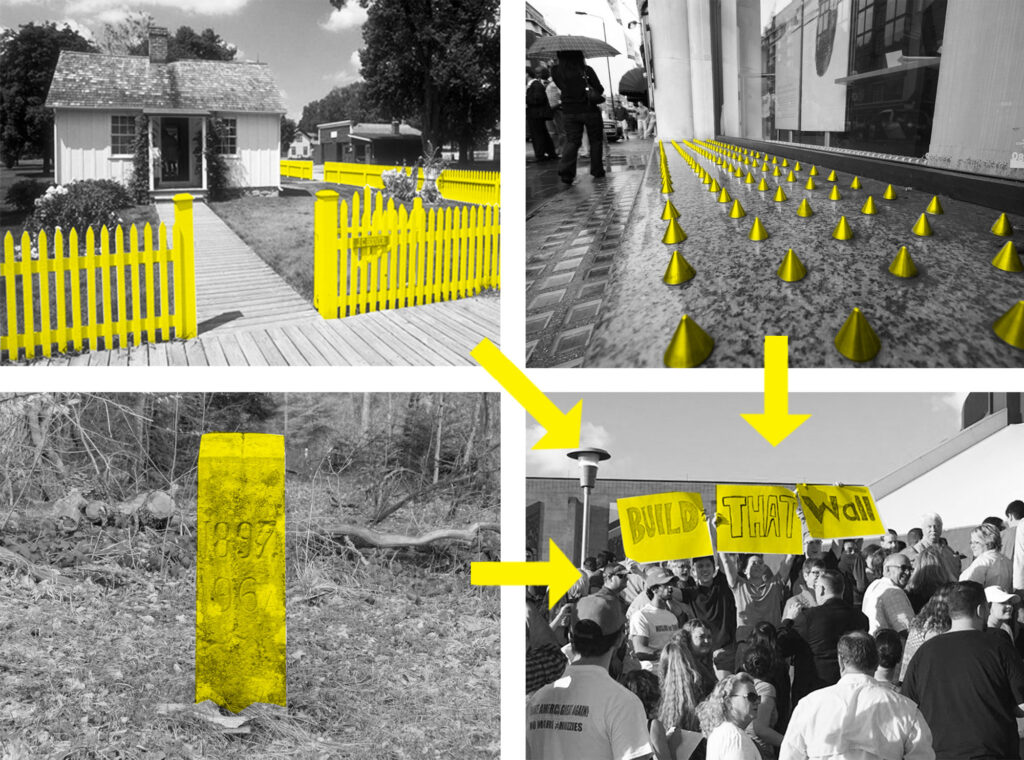
Transference of agression through environment to society, boundary stone, white picket fence, and hostile architecture; “Built that Wall” Donald Trump supporters. Photo credits clockwise from top-left: Mark Goebel, Saitor, Sara Dinatale, Thomas Bresson.
Beneficial Transference
Beneficial ETT refers to what we would deem as learned behaviour beneficial to the individual or collective.
Individual example: Physical health
Much of the modern world’s efforts in design have focused on building an environment that prevents us from having to exert ourselves. Coupled with dietary habits, this has led to a rise in obesity and a range of other physical health issues. The counter to this effect is a new drive towards active design. By building environments that encourage physical activity, say a preference for stairs over elevators, a building’s trait of valuing exercise can be transferred over time to its users.
Collective example: Tolerance and diversity
A study by Oxford University into tolerance and prejudice in neighbourhoods with varying racial diversity revealed what lead researcher Miles Hewstone called “passive tolerance”. The research has shown “that positive contact between people belonging to different ethnic groups leads to more tolerant societies overall”2. This isn’t to say that all ethnic diversity leads to tolerance, in fact it can also lead to tension. It is the social and environmental context of the interactions that determine whether they are of a positive nature. In an environment that possesses democratic traits, spaces where commonality can be observed might contribute to fostering a corresponding collective value.
ETT and disjunction
Some environments may so strongly transfer traits that a disjunction between an individual incompatible with those traits will emerge. In this instance, architecture actively participates in the formation of in-groups and out-groups and becomes an agent of groupthink.
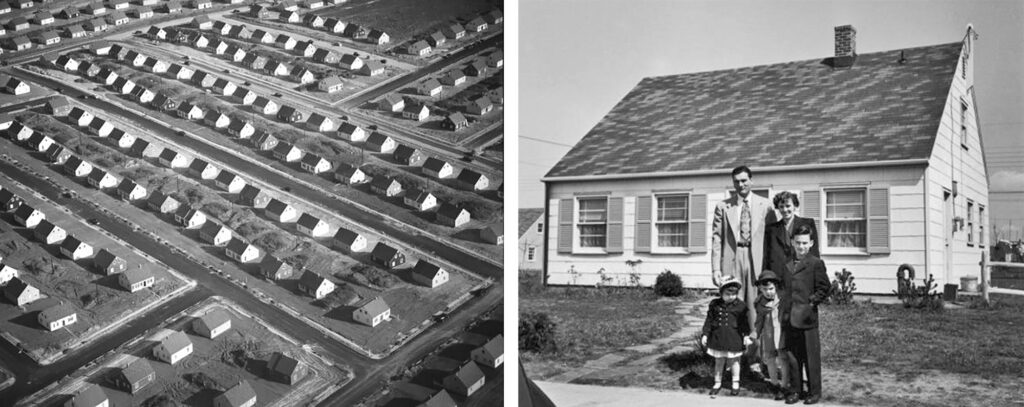
Levittown, USA. Considered one of the first American suburban neighbourhoods, built between 1947 – 1951.
Take for example the physical qualities of suburbia. Row after row of cookie cutter homes, uniform in shape and size, with a public facade which demands active participation in ‘keeping up appearances’. Irving L. Janis, author of Victims of Groupthink (1972) wrote about the phenomena’s dangerous ability to “promote simplistic and self-righteous stereotypes”3. Suburbia supports the same traits, rejecting individual qualities in favour of a standardisation of collective values, and the devaluation of inclusivity. It may well be that for some, this arrangement is aligned to their values, but for others it means a disjunction between individual desires and the affordances available.
Popular culture is rich in the exploration of this particular disjunction. Desperate Housewives, a hugely successful television series spent 8 seasons describing the unhealthy relationship between a suburban environment and a cast of individuals. American Beauty dealt with similar motifs of the societal decay beneath the veneer of American suburbia.
In the most extreme cases, the disjunction between environmental traits and an individual’s leads to catastrophic consequences. Investigation of school shootings in the United States is uncovering a pattern of perpetrators being “often boys at the margins of society …socially awkward and struggling to fit in”4. It’s difficult to ignore the role of an environment that prizes uniformity in the outcasting of individuals. Instead of bringing those struggling to form a healthy identity into the fold, our environment might be imploring communities to push them out.
ETT and diversity
Research into the debate of nature versus nurture is producing findings which could point to the useful framing of how an environment guides behaviour. In a longitudinal study that began in 1979 at the University of Minnesota, of personality traits measured, “more than half the variation was found to be due to heredity, leaving less than half determined by the influence of parents, home environment and other experiences in life.”5
The research infers that rather than the environment being able to completely shape personality traits, it plays a role in supporting or suppressing inherent traits. To architecture with specific intent this spells out limitations, but to society it is akin to an insurance policy. The diversity of inherited traits ensures that an the exchange between environment and human stays a dialogue rather than tyranny. The recurring motif in popular culture of an outsider freeing the masses (1984, the Matrix, The Giver) from a grips of greater power is based exactly on the limitations that external forces have on the complexity and robustness of human diversity.
On the other hand, the field of neuroscience is beginning to point to where people’s cognitive commonalities might lie, and also as to the workings of non-universal, specific human conditions (i.e. autism, dementia). It is with this emerging knowledge that architecture should be informed to become aware of the potential harmful or beneficial traits it might transfer.
Conscious Cities as a place of dialogue
The concept of conscious cities proposes that in order for us to create a built environment beneficial to society; we must create design that is aware to the user’s needs. We have begun to develop methods to understand more deeply the cognitive and psychological effects of places at different scales. Some of these methods are presented in this edition of the journal, forming part of the foundations towards a shift in how we assign value to space. Metrics that allow us to decipher the physical and mental effects of the built environment will act as the vehicle for improving design. As a result, it should reignite the conversation regarding what we can and should expect from our cities.
Observing the dialogue between environment and people could uncover the mechanisms by which we inherit traits from our surroundings. Only then will we understand more thoroughly the ways in which we shape, and are shaped by architecture.
References
1 Tublitz, Nathan. 2008. “Neural Plasticity: A Window into the Complexity of the Brain.”
2 “‘Postcode lottery’ for Race Relations,” March 4, 2014, accessed February 28, 2017, http://www.ox.ac.uk/news/2014-03-04-postcode-lottery-race-relations.
3 Nemeth, Charlan; Tetlock, Philip (1991). “University of California: In Memoriam, 1991. Irving L. Janis”
4 Brad PlumerBy Brad Plumer, “The Social Roots of School Shootings,” Washington Post (Washington Post), December 18, 2012, https://www.washingtonpost.com/news/wonk/wp/2012/12/18/the-small-town-roots-of-school-shootings/?utm_term=.e0d89d0ccb20.
5 Daniel Goleman, “Major personality study finds that traits are mostly inherited,” The New York Times (The New York Times), December 2, 1986, http://www.nytimes.com/1986/12/02/science/major-personality-study-finds-that-traits-are-mostly-inherited.html?pagewanted=all.

